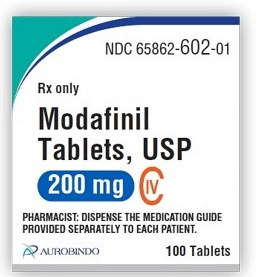Description
TRAMADOL-1
Tramadol-1 Red Apple is a medication that contains 225mg of tramadol hydrochloride per tablet. It is available in a box containing 100 tablets. Tramadol is a centrally acting opioid analgesic that is commonly used to treat moderate to severe pain. In this comprehensive response, we will explore various aspects of Tramadol-1 Red Apple, including its uses, dosage, side effects, precautions, and interactions.
Uses of Tramadol-1 Red Apple
Tramadol-1 Red Apple is primarily prescribed for the management of moderate to severe pain. It is often used to alleviate pain associated with conditions such as postoperative pain, musculoskeletal pain, neuropathic pain, and cancer-related pain. Tramadol works by binding to opioid receptors in the brain and spinal cord, thereby reducing the perception of pain.
Dosage and Administration
The recommended dosage of Tramadol-1 Red Apple may vary depending on the individual’s age, medical condition, and response to treatment. It is crucial to follow the instructions provided by the healthcare professional or the information leaflet included with the medication.
Typically, the initial dose for adults is 50-100mg every 4-6 hours as needed for pain relief. The maximum daily dose should not exceed 400mg. The dosage may be adjusted based on the individual’s response and tolerance to the medication.
For elderly patients (above 75 years), individuals with liver or kidney impairment, or those who are taking certain medications that may interact with tramadol, lower doses may be recommended.
It is important not to crush or chew Tramadol-1 Red Apple tablets as it can lead to a rapid release of the drug and increase the risk of adverse effects. The tablets should be swallowed whole with a glass of water.
Side Effects
Like any medication, Tramadol-1 Red Apple can cause side effects. Common side effects may include dizziness, drowsiness, constipation, nausea, vomiting, headache, and dry mouth. These side effects are usually mild and temporary.
However, some individuals may experience more severe side effects such as seizures, hallucinations, difficulty breathing, rapid heartbeat, or allergic reactions. If any of these serious side effects occur, immediate medical attention should be sought.
Precautions and Contraindications
Tramadol-1 Red Apple should be used with caution in certain populations and medical conditions. It is contraindicated in individuals who have a known hypersensitivity to tramadol or any of its components. It should also be avoided in patients with acute intoxication with alcohol, hypnotics, opioids, or psychotropic drugs.
Caution should be exercised when prescribing Tramadol-1 Red Apple to individuals with a history of substance abuse or addiction. Tramadol has the potential for abuse and can lead to physical and psychological dependence.
The use of Tramadol-1 Red Apple is not recommended during pregnancy as it may cause harm to the fetus. It is also not recommended for breastfeeding mothers as tramadol can pass into breast milk and may cause adverse effects in the infant.
Tramadol-1 Red Apple should be used cautiously in patients with liver or kidney impairment as the elimination of tramadol may be impaired in these individuals. Lower doses or extended dosing intervals may be necessary.
Drug Interactions
Tramadol-1 Red Apple has the potential to interact with other medications, which can affect its efficacy or increase the risk of side effects. It is important to inform the healthcare professional about all medications being taken, including prescription drugs, over-the-counter medications, and herbal supplements.
Tramadol should not be taken concomitantly with monoamine oxidase inhibitors (MAOIs) or within 14 days after discontinuing MAOI therapy due to the risk of serotonin syndrome. Serotonin syndrome is a potentially life-threatening condition characterized by agitation, hallucinations, rapid heartbeat, fever, muscle stiffness, and tremors.
Tramadol may also interact with other medications that affect the central nervous system, such as sedatives, tranquilizers, antidepressants, antipsychotics, and other opioids. These interactions can potentiate the sedative effects of tramadol and increase the risk of respiratory depression.
Conclusion
Tramadol-1 Red Apple is a medication that contains 225mg of tramadol hydrochloride per tablet. It is primarily used for the management of moderate to severe pain. The dosage and administration should be followed as prescribed by the healthcare professional or as indicated in the information leaflet.
While Tramadol-1 Red Apple can provide effective pain relief, it is important to be aware of potential side effects and precautions. Common side effects include dizziness, drowsiness, constipation, nausea, vomiting, headache, and dry mouth. Serious side effects should be reported to a healthcare professional immediately.
Tramadol-1 Red Apple should be used with caution in certain populations such as those with a history of substance abuse or addiction and individuals with liver or kidney impairment. It is contraindicated in individuals with hypersensitivity to tramadol or acute intoxication with certain substances.
The use of Tramadol-1 Red Apple during pregnancy and breastfeeding is not recommended due to potential harm to the fetus and infant. Additionally, Tramadol-1 Red Apple can interact with other medications, particularly those affecting the central nervous system.
Overall, Tramadol-1 Red Apple can be an effective analgesic when used appropriately under medical supervision. However, it is essential to follow the prescribed dosage and inform healthcare professionals about any other medications being taken to minimize the risk of adverse effects or drug interactions.
Tramadol is a medication that belongs to the class of drugs known as opioids. It is primarily used to treat moderate to severe pain. Tramadol works by binding to opioid receptors in the brain, which helps to reduce the perception of pain. However, like other opioids, tramadol can be habit-forming and may cause various side effects. Therefore, it is important to use tramadol safely and responsibly. In this comprehensive guide, we will discuss various aspects of keeping tramadol, including storage, dosage, potential side effects, interactions, and precautions.
Storage of Tramadol:
Proper storage of tramadol is crucial to maintain its effectiveness and ensure its safety. Here are some guidelines for storing tramadol:
1. Keep tramadol in a secure place: Store tramadol in a locked cabinet or container that is out of reach of children and pets. This will help prevent accidental ingestion or misuse.
2. Store at room temperature: Tramadol should be stored at room temperature between 68°F and 77°F (20°C and 25°C). Avoid exposing it to extreme temperatures or direct sunlight.
3. Protect from moisture: Keep tramadol in its original packaging or a tightly closed container to protect it from moisture. Avoid storing it in the bathroom or any other area with high humidity.
4. Avoid transferring to different containers: It is recommended not to transfer tramadol tablets or capsules to different containers unless advised by a healthcare professional or pharmacist. The original packaging provides important information about the medication.
5. Dispose of expired or unused medication: If you have any expired or unused tramadol, it is important to dispose of it properly. Follow local regulations or consult with a pharmacist on how to safely dispose of medications.
Dosage Guidelines:
The dosage of tramadol varies depending on factors such as the severity of pain, individual response, and medical condition. It is essential to follow the prescribed dosage and instructions provided by your healthcare provider. Here are some general guidelines for tramadol dosage:
1. Start with the lowest effective dose: Tramadol is available in different strengths, including immediate-release tablets, extended-release tablets, and capsules. Your healthcare provider will determine the appropriate strength and starting dose based on your condition. It is usually recommended to start with the lowest effective dose and adjust as needed.
2. Follow the dosing schedule: Take tramadol as directed by your healthcare provider. It is typically taken every 4 to 6 hours for immediate-release formulations or once daily for extended-release formulations. Do not exceed the recommended dose or take it more frequently than prescribed.
3. Avoid sudden discontinuation: Tramadol should not be abruptly stopped without consulting a healthcare professional. Sudden discontinuation can lead to withdrawal symptoms such as restlessness, anxiety, sweating, muscle aches, and insomnia. If you need to stop taking tramadol, your healthcare provider will provide guidance on how to gradually reduce the dose.
4. Individualize dosage for elderly patients: Elderly patients may require lower doses of tramadol due to age-related changes in metabolism and kidney function. Healthcare providers may adjust the dosage accordingly to minimize the risk of side effects.
Potential Side Effects:
Tramadol, like other opioids, can cause various side effects. Common side effects include:
1. Nausea and vomiting
2. Constipation
3. Dizziness or lightheadedness
4. Drowsiness
5. Headache
6. Dry mouth
7. Sweating
These side effects are usually temporary and may subside as your body adjusts to the medication. However, if these side effects persist or worsen, it is important to consult your healthcare provider.
In rare cases, tramadol can cause more serious side effects, including:
1. Seizures
2. Serotonin syndrome
3. Allergic reactions
If you experience any of these serious side effects, seek immediate medical attention.
Interactions and Precautions:
Tramadol can interact with other medications, substances, or medical conditions, potentially leading to adverse effects. It is important to inform your healthcare provider about all the medications you are taking, including prescription drugs, over-the-counter medications, and herbal supplements. Here are some important interactions and precautions to consider:
1. Drug interactions: Tramadol may interact with certain medications such as selective serotonin reuptake inhibitors (SSRIs), monoamine oxidase inhibitors (MAOIs), tricyclic antidepressants (TCAs), and other opioids. These interactions can increase the risk of serotonin syndrome or respiratory depression. Your healthcare provider will evaluate potential interactions and adjust the dosage or recommend alternative medications if necessary.
2. Medical conditions: Tramadol should be used with caution in patients with certain medical conditions such as respiratory depression, asthma, epilepsy, liver or kidney disease, and a history of substance abuse. Inform your healthcare provider about your medical history to ensure safe usage of tramadol.
3. Pregnancy and breastfeeding: Tramadol should be used with caution during pregnancy or breastfeeding. It may have potential risks to the fetus or newborn. Consult with your healthcare provider for guidance on the use of tramadol in these situations.
4. Alcohol and sedatives: Tramadol can enhance the sedative effects of alcohol and other central nervous system depressants. Avoid consuming alcohol or using sedatives while taking tramadol to prevent excessive drowsiness or respiratory depression.
5. Driving and operating machinery: Tramadol may cause drowsiness, dizziness, or blurred vision, which can impair your ability to drive or operate machinery. Avoid activities that require mental alertness until you know how tramadol affects you.
In conclusion, keeping tramadol safely involves proper storage, following dosage guidelines, being aware of potential side effects, understanding interactions and precautions, and seeking guidance from healthcare professionals. By adhering to these recommendations, you can ensure the safe and effective use of tramadol for pain management.
What does 1 tramadol do to you?
Take this medication by mouth as directed by your doctor, usually up to every 4 to 6 hours as needed for pain relief. You may take this drug with or without food. If you have nausea, it may help to take this drug with food. Ask your doctor or pharmacist about other ways to decrease nausea (such as lying down for 1 to 2 hours with as little head movement as possible). TRAMADOL-1
If you are using the liquid form of this medication, carefully measure the dose using a special measuring device/spoon. Do not use a household spoon because you may not get the correct dose. TRAMADOL-1
Will 1 tramadol make you sleepy?
The dosage is based on your medical condition and response to treatment. To reduce your risk of side effects, your doctor may direct you to start this medication at a low dose and gradually increase your dose. Follow your doctor’s instructions carefully. The maximum recommended dose is 400 milligrams per day. If you are older than 75 years, the maximum recommended dose is 300 milligrams per day. Do not increase your dose.tramadol interactions that increase your risk
Is tramadol a Schedule 1 controlled substance?
Tramadol a strong painkiller?
Without consulting your doctor, do not discontinue taking tapentadol. Your dose will likely be gradually reduced by your doctor. Tapentadol withdrawal symptoms include restlessness, anxiety, irritability, teary eyes, yawning, chills, sweating, difficulty falling or staying asleep, shivering, uncontrollable shaking of a part of your body, weakness, nausea, vomiting, diarrhea, stomach cramps, loss of appetite, hair on your skin standing on end, fast breathing, fast heartbeat, and widening of your pupils (seeing things or hearing voices that do not exist).Take the extended-release pills one at a time with lots of water if you’re taking them. After placing each tablet in your mouth, immediately swallow it.capsules summary of product characteristics,summary of product characteristics smpc







Reviews
There are no reviews yet.